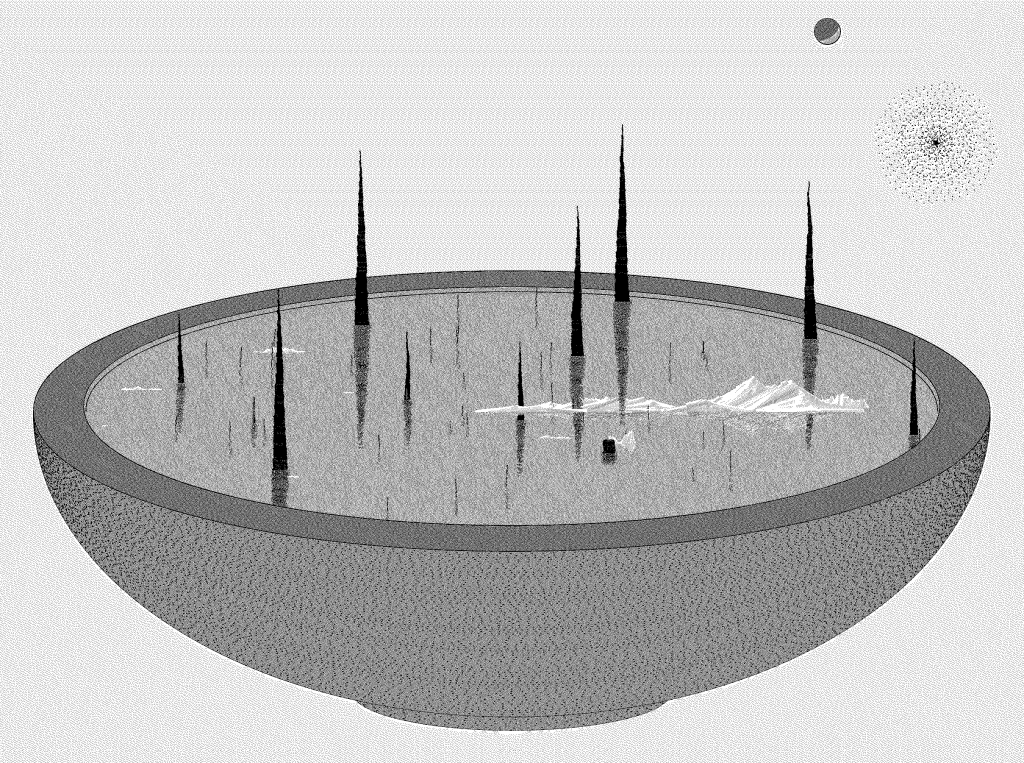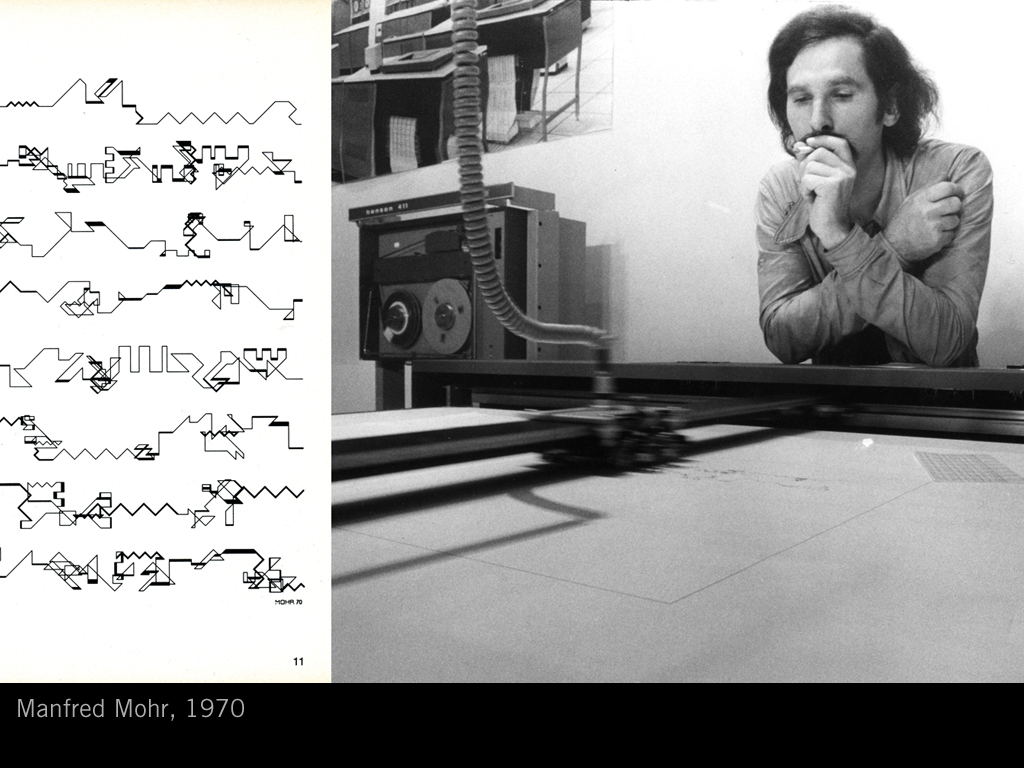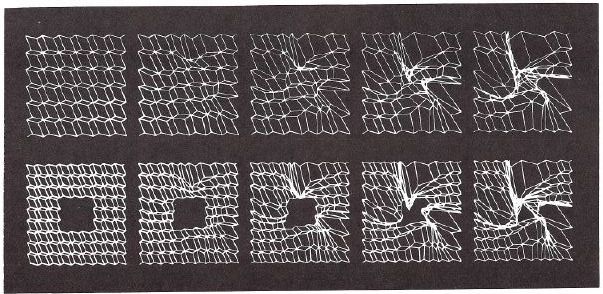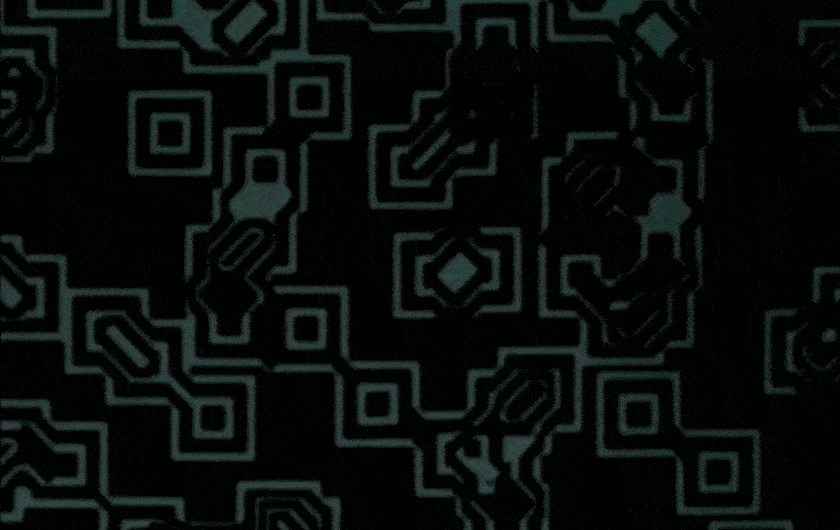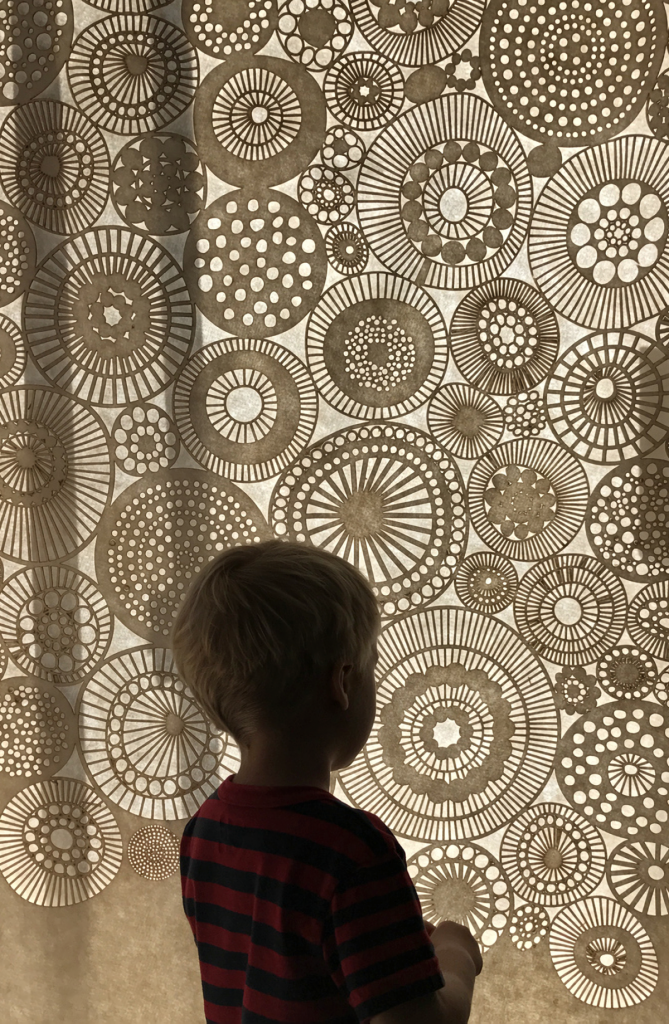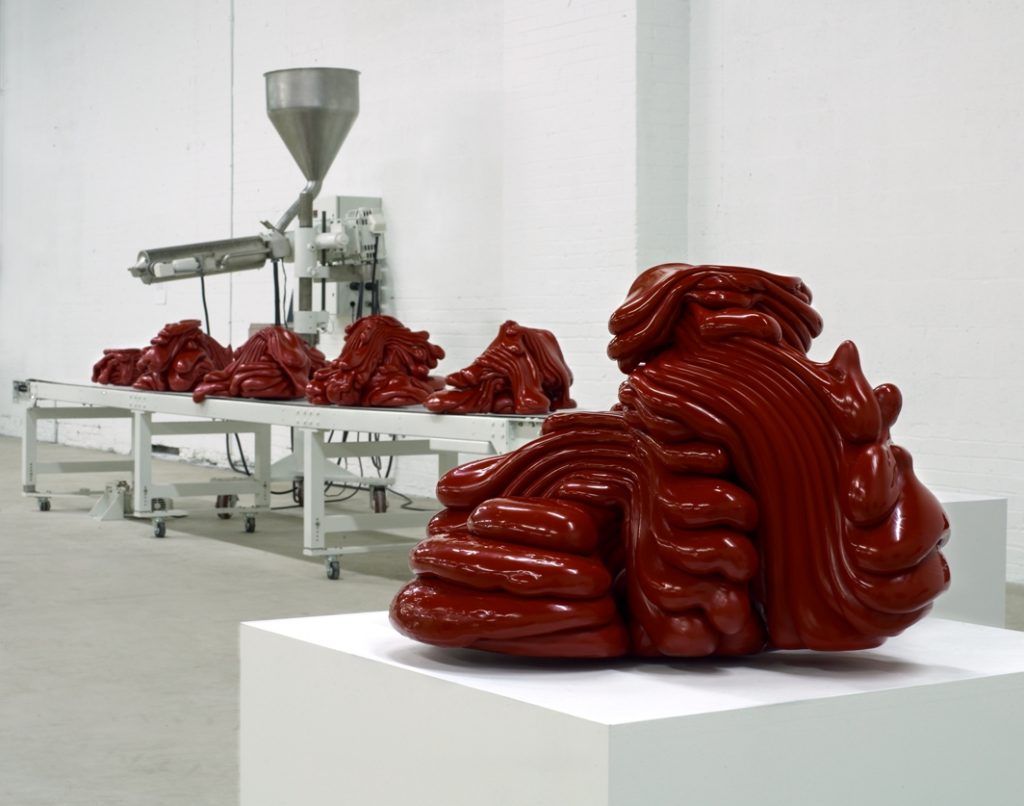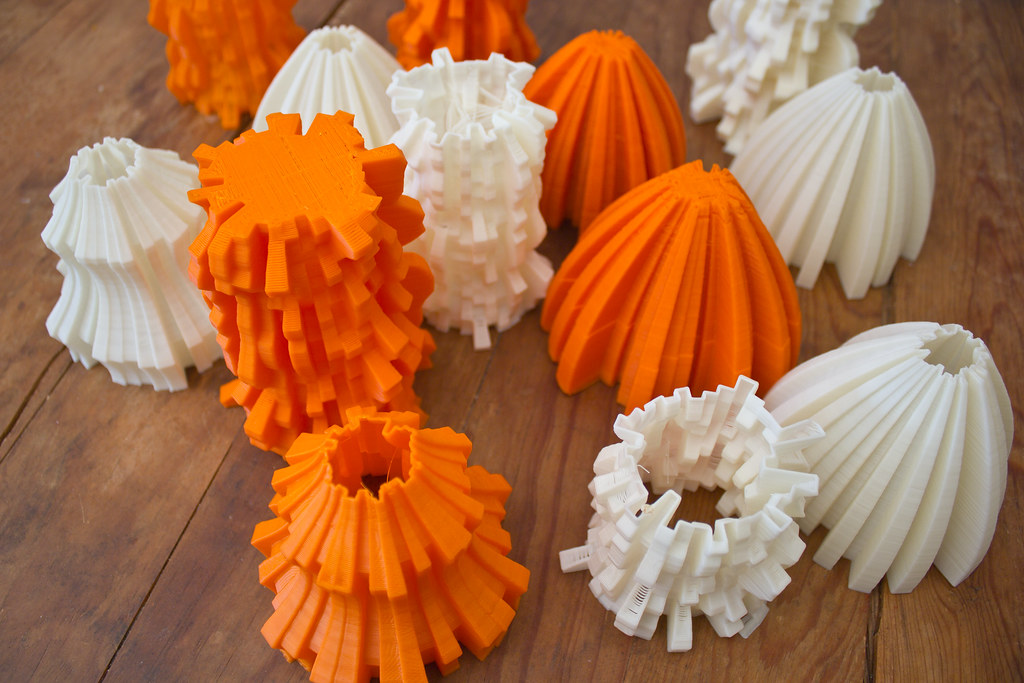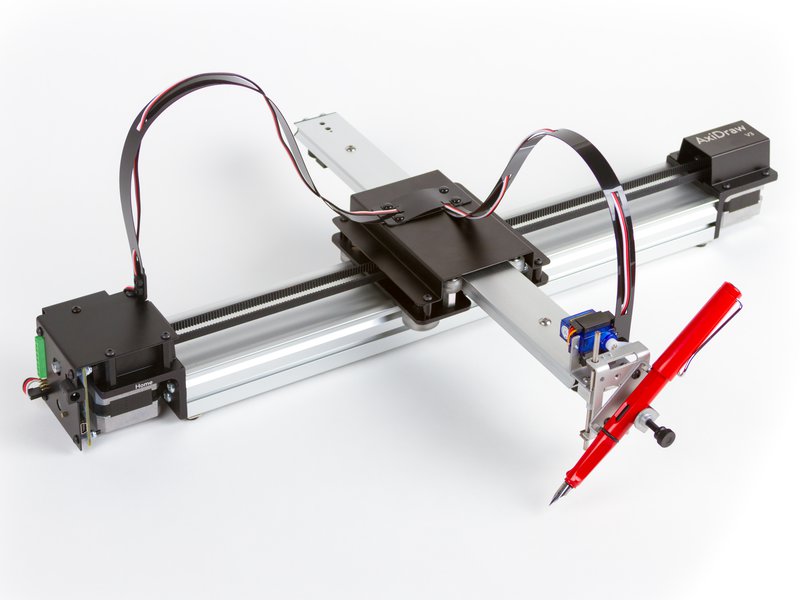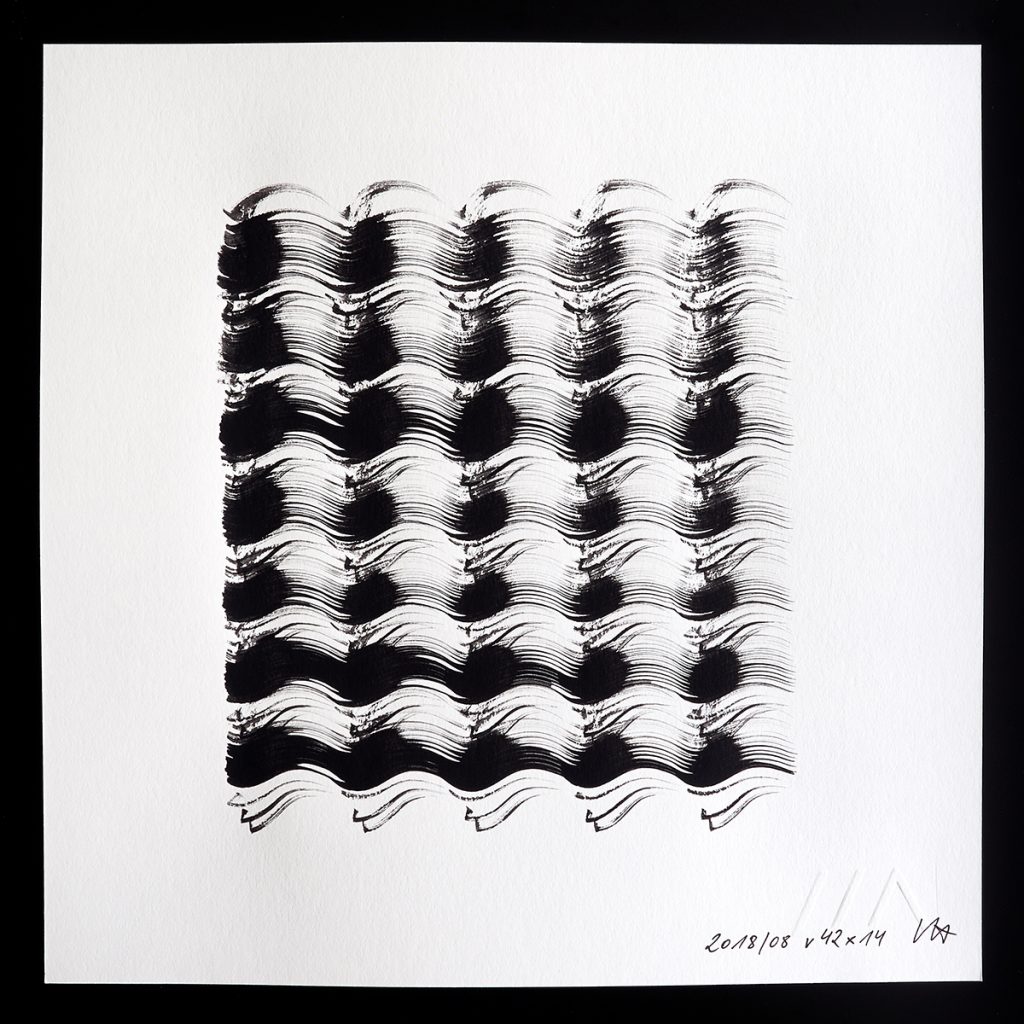Tasting: A Few Generative Artwork Systems
Here is a very small selection of some generative artworks.
Old-skool (plotter works)
- Frieder Nake, Hommage à Paul Klee (1965)
- Georg Nees, Schotter (1968)
- Vera Molnár, Interruptions (1968)
- Manfred Mohr, P-021/A + B (1969)
- Colette Bangert and Charles Bangert, Large Landscape: Ochre & Black (1970)
- Ruth Leavitt, Diamond Transformations (1974)
Lillian F. Schwartz (1927-), Pixillation (1970). Lillian F. Schwartz is one of the first artists to create computer animation. As a long-term resident artist at Bell Laboratories during the 70s and 80s, Schwartz developed a catalogue of visionary techniques for the use of computational form.
Newer:
- Michael Chang, Generative Machines, 2012 (& writeup)
- Sketches for generative leaves by Ilana Katz, 2021
- Matthias Dörfelt, Munching, 2014
- Algorat Collective (Connie Ye, Char Stiles, Tatyana Mustakos, Caroline Hermans), Ratmaker
- Kate Compton, Puppets, 2017
- Everest Pipkin, Mirror Lake, 2015, and Moth Generator, 2015
- Robert Hodgin, Growth v02 (2022); Meander generative map (including his signature)
- Zach Lieberman and Iskra Velitchkova, Horizon(te)s, 2022 (@fxhash)
- Memo Akten + James Paterson, A Strange Loop, 2022
- Lingdong Huang, Shan Shui (2018) and photos; and Fishdraw (2021)
- Licia He, generative plotter/watercolor works (2020-)
- Michaël Zancan, Lushtemples (2021), Garden Monoliths (2021)
- Jennifer Steinkamp, Daisy Bell (2008), wall projection
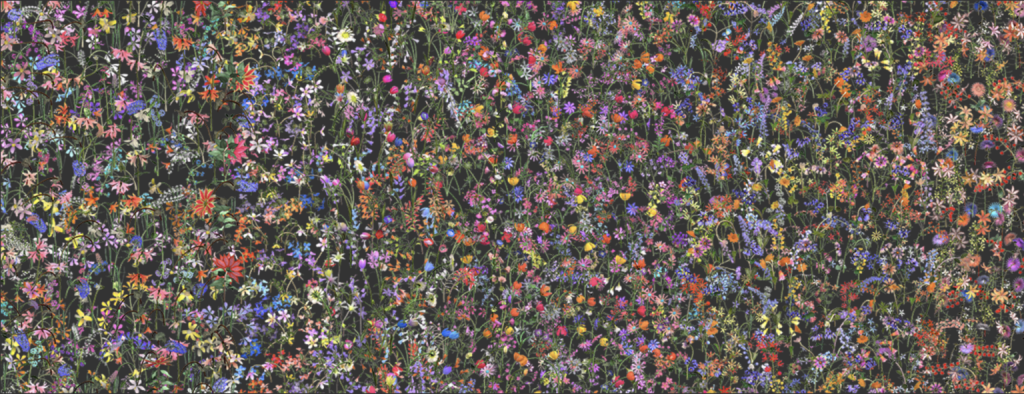
- Jessica Rosenkrantz & Jesse Louis-Rosenburg (Nervous System): Growing a Hyphae Lamp process and results; generative jigsaw puzzles; Cell Cycle custom ring; Kinematics Dress
- Leah Buechley, Lasercut Curtain, 2017
A few more generative artwork systems:
There is a wide range of process-based generative art and rule-based generative art that does not use code. SCUMAK by sculptor Roxy Paine, a machine that creates blobby plastic forms, is an excellent example. Each of the forms “generated” by the machine represents a negotiation between “parameters” represented by device settings and natural random forces in the physical world.
Here are computationally generated, 3D printed sculptures by Norwegian artist, Marius Watz:
- Books with computationally-generated covers
- Still Life (Morandi’s Infinite Shelf), Jason Salavon, 2009; (…also see his Form Study #1, 2004)
- Mononymous OG generative artist, Lia’s mechanical plotter drawings (2018). (made using an AxiDraw plotter) —

